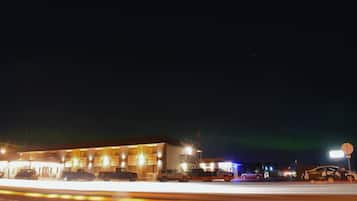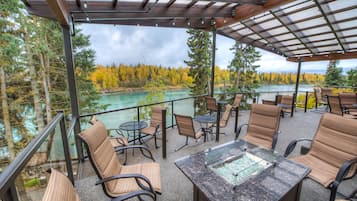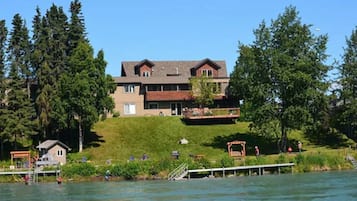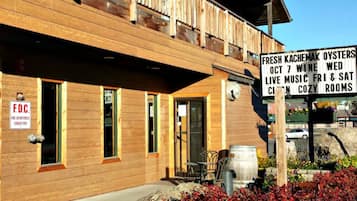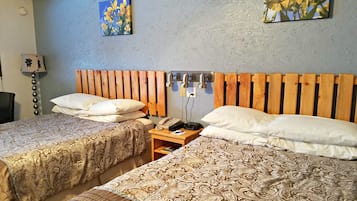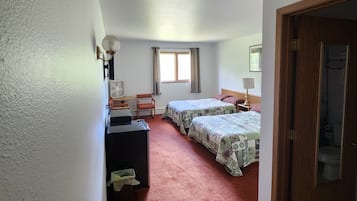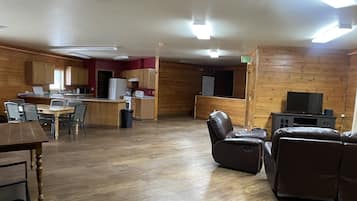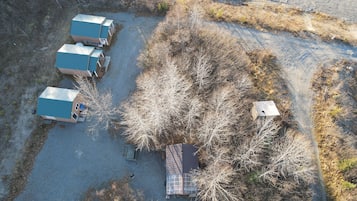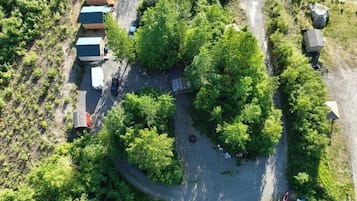Foto von Sharrie Shaw
Hotels in Nikiski
- Und wenn du deine Meinung änderst?Ganz einfach: Buche Hotels mit kostenloser Stornierung.
- Sei ruhig wählerischStöbere in fast einer Million Unterkünften auf der ganzen Welt.
Probiere es mit einer anderen Unterkunft als sonst in Nikiski
Apartment
Überprüfe die Preise für diese Daten
Heute
Morgen
Dieses Wochenende
Nächstes Wochenende
Beliebte Hotels in Nikiski

Aspen Extended Stay Suites Kenai
Kenai
9.0 von 10, Wunderbar, (706)
Der Preis beträgt CHF 86
inkl. Steuern & Gebühren
17. Dez.–18. Dez.

Quality Inn Kenai
Kenai
8.4 von 10, Sehr gut, (564)
Der Preis beträgt CHF 91
inkl. Steuern & Gebühren
8. Dez.–9. Dez.

Alaska Angler's Inn
Soldotna
8.0 von 10, Sehr gut, (301)

The Kenai Inn
Kenai
8.4 von 10, Sehr gut, (48)
Der Preis beträgt CHF 89
inkl. Steuern & Gebühren
28. Nov.–29. Nov.

Best Western King Salmon Inn
Soldotna
8.2 von 10, Sehr gut, (377)
Der Preis beträgt CHF 99
inkl. Steuern & Gebühren
28. Nov.–29. Nov.

Aspen Hotel Soldotna
Soldotna
8.6 von 10, Hervorragend, (793)
Der Preis beträgt CHF 94
inkl. Steuern & Gebühren
26. Dez.–27. Dez.
Dies ist der niedrigste Preis pro Nacht, der in den letzten 24 Stunden für einen Aufenthalt mit 1 Übernachtung von 2 Erwachsenen gefunden wurde. Preise und Verfügbarkeiten können sich ändern. Es können zusätzliche Bedingungen gelten.
Spare mindestens 10% bei Tausenden Hotels, wenn du angemeldet bist
Übernachte in der Nähe beliebter Attraktionen in Nikiski
Erfahre mehr über Nikiski
Entdecke das abgeschiedene Reiseziel Nikiski: mit Kanufahren, einem Wasserpark, Camping und mehr!
![The Arctic Circle is one of the five major circles of latitude that mark maps of the Earth. As of 16 February 2015, it runs 66°33′45.6″ north of the Equator.
The region north of this circle is known as the Arctic, and the zone just to the south is called the Northern Temperate Zone. The equivalent polar circle in the Southern Hemisphere is called the Antarctic Circle.
The Arctic Circle is the southernmost latitude in the Northern Hemisphere at which the sun can remain continuously above or below the horizon for 24 hours (at the June solstice and December solstice respectively). North of the Arctic Circle, the sun is above the horizon for 24 continuous hours at least once per year (and therefore visible at midnight) and below the horizon for 24 continuous hours at least once per year (and therefore not visible at noon). On the Arctic Circle those events occur, in principle, exactly once per year, at the June and December solstices, respectively. However, in practice, because of atmospheric refraction and mirages, and because the sun appears as a disk and not a point, part of the midnight sun may be seen on the night of the northern summer solstice up to about 50′ (90 km (56 mi)) south of the Arctic Circle; similarly, on the day of the northern winter solstice, part of the sun may be seen up to about 50′ north of the Arctic Circle. That is true at sea level; those limits increase with elevation above sea level, although in mountainous regions there is often no direct view of the true horizon.
The position of the Arctic Circle is not fixed. It directly depends on the Earth's axial tilt, which fluctuates within a margin of 2° over a 40,000-year period,[2] notably due to tidal forces resulting from the orbit of the Moon. The Arctic Circle is currently drifting northwards at a speed of about 15 m (49 ft) per year; see Circle of latitude for more information.
#snow](https://images.trvl-media.com/place/6140564/a9f9449e-bab4-40a6-a9a1-5356b0cc2aa8.jpg?impolicy=fcrop&w=900&h=675&p=1&q=high)
Foto von Sharrie Shaw
Öffentliches Foto von Sharrie Shaw

Aspen Hotel Soldotna
326 Binkley Circle Soldotna AK
Der Preis beträgt CHF 94 pro Nacht vom 26. Dez. bis zum 27. Dez.
CHF 94
26. Dez.–27. Dez.
inkl. Steuern & Gebühren
8.6/10 Excellent! (787 Bewertungen)
Häufig gestellte Fragen
Entdecke eine Welt voller Reisen mit Expedia
Hotels nahe Nikiski, Kenai
Die beliebtesten Hotels in Nikiski
Mehr Möglichkeiten zum Buchen
Neueste Trends bei Expedia
Hotels
- Hotel Bären
- Clayton Hotel London Wall
- Hotels mit Kinderbetreuung in Basel
- Hotels mit Pool in Lago Maggiore
- Hotels in Aarau
- Hotel Bellevue Bären
- Esila Thermal Hotel & Spa
- Capo Torre Resort
- Hotels in Edinburgh
- Barony Le Pergole
- Hotel Menorca Binibeca - Adults Recommended- by Pierre & Vacances Premium
- Hotel Rössli
- Charmantes Ferienhaus in La Croix-Valmer mit großer Terrasse und Pool
- Campingplätze Chiasso
Flüge
Reisepakete
Ferienunterkünfte
![The Arctic Circle is one of the five major circles of latitude that mark maps of the Earth. As of 16 February 2015, it runs 66°33′45.6″ north of the Equator.
The region north of this circle is known as the Arctic, and the zone just to the south is called the Northern Temperate Zone. The equivalent polar circle in the Southern Hemisphere is called the Antarctic Circle.
The Arctic Circle is the southernmost latitude in the Northern Hemisphere at which the sun can remain continuously above or below the horizon for 24 hours (at the June solstice and December solstice respectively). North of the Arctic Circle, the sun is above the horizon for 24 continuous hours at least once per year (and therefore visible at midnight) and below the horizon for 24 continuous hours at least once per year (and therefore not visible at noon). On the Arctic Circle those events occur, in principle, exactly once per year, at the June and December solstices, respectively. However, in practice, because of atmospheric refraction and mirages, and because the sun appears as a disk and not a point, part of the midnight sun may be seen on the night of the northern summer solstice up to about 50′ (90 km (56 mi)) south of the Arctic Circle; similarly, on the day of the northern winter solstice, part of the sun may be seen up to about 50′ north of the Arctic Circle. That is true at sea level; those limits increase with elevation above sea level, although in mountainous regions there is often no direct view of the true horizon.
The position of the Arctic Circle is not fixed. It directly depends on the Earth's axial tilt, which fluctuates within a margin of 2° over a 40,000-year period,[2] notably due to tidal forces resulting from the orbit of the Moon. The Arctic Circle is currently drifting northwards at a speed of about 15 m (49 ft) per year; see Circle of latitude for more information.
#snow](https://images.trvl-media.com/place/6140564/a9f9449e-bab4-40a6-a9a1-5356b0cc2aa8.jpg?impolicy=fcrop&w=1200&h=500&q=medium)





















